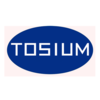N對汽車發動機用新型奧氏體耐熱鑄鋼1000℃蠕變性能的影響N對汽車發動機用新型奧氏體耐熱鑄鋼1000℃蠕變性能的影響EFFECTS OF N ON CREEP PROPERTIES AT 1000 ℃ IN AUSTENITIC HEAT-RESISTANT CAST STEELS DEVELOPED FOR EXHAUST COMPONENT APPLICATIONS 為了應對汽車發動機排氣溫度將大幅升高至 1050 ℃的要求,本工作以新設計的 3 種不同 N 含量(0 ~ 0.55 %)的 Nb 穩定化奧氏體耐熱鑄鋼為研究對象,通過在 1000 ℃,50 MPa 條件下的蠕變性能測試和蠕變前后的組織分析,研究了 N 對奧氏體耐熱鑄鋼 1000 ℃蠕變性能的影響規律。結果表明:根據 N 添加量的不同,合金之間的最小蠕變速率相差接近一個數量級。合金的主要析出相為 NbC,Nb(C,N)和富 Cr 相。隨著 N 含量的增加,合金中 NbC 轉變為 Nb(C,N),其形貌逐漸從草書體狀轉變為不規則的混合片塊狀,并最終轉變為多面體塊狀。其中,草書體狀 NbC 能有效強化鑄鋼的晶界和枝晶間區域,因而有利于提高高溫蠕變性能。富 Cr 相在晶界的粗化連接是合金蠕變斷裂的主要裂紋源,不利于蠕變性能。富 Cr 相的二次析出還會降低奧氏體基體固溶的 C 含量,從而降低其固溶強化能力。草書體狀 NbC 的析出及富 Cr 相含量的降低是新型奧氏體耐熱鑄鋼蠕變性能提高的主要原因。 To comply with more stringent environmental and fuel consumption regulations in recent years, automotive gasoline engines equipped with turbochargers are increasingly used to improve fuel efficiency. As a result, exhaust gas temperatures are now reaching 1050 ℃, about 200 ℃ higher than the conventional temperature. Hence, there is an urgent demand in automobile industries to develop novel and economic austenitic heat-resistant steels that are durable against these increased temperatures. In this study, the effects of N addition on creep behavior at 1000 ℃ and 50 MPa are investigated in a series of Nb-bearing austenitic heat-resistant cast steels, which are developed for exhaust component applications. Microstructures before and after creep rupture tests are carefully characterized to illustrate the microstructural evolution during creep deformation. The results of creep tests show approximately an order of magnitude increase in the minimum creep rate among the experimental alloys with variations of N addition. Microstructural analyses indicate that the morphology of NbC and Nb(C,N) is changed from “Chinese-script” to mixed flake-blocks, and then to faceted blocks as N additions increase. The best creep property occurs in an alloy with “Chinese-script” NbC, which could effectively strengthen the grain boundaries and interdendritic regions. The Cr-rich phases are adverse to creep properties, in particular those coarsened and coalesced phases along grain boundaries. They act as crack sources and accelerate the propagation of creep cracks. Moreover, the secondary precipitation of Cr-rich phase results in a significant decrease of C concentration in the matrix and thus reduce the solution strengthening ability during creep deformation. This study suggests that the strengthening of these austenitic cast steels can be achieved through the exploit of primary NbC and Nb(C,N) and the elimination of Cr-rich phases, and therefore, N additions should be strictly controlled. 全文下載:https://pan.baidu.com/s/1skAOK1n
|







